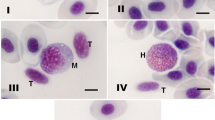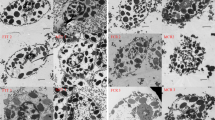Abstract
In Great Britain there are three common species of Daphnia living in ponds and ditches, namely, D. magna Straus, D. pulex (De Geer) and D. obtusa Kurz. They are often coloured pink or red by hæmoglobin in solution in the blood1. Other species, found in lake plankton, have colourless blood. The blood of any of the pond species may vary from red to pale pink or colourless in different localities, or in the same pond at different times. In the laboratory individuals can gain or lose hæmoglobin in the course of a few days. When anæmic, Daphnia is as vigorous as when its blood is red.
This is a preview of subscription content, access via your institution
Access options
Subscribe to this journal
Receive 51 print issues and online access
$199.00 per year
only $3.90 per issue
Buy this article
- Purchase on Springer Link
- Instant access to full article PDF
Prices may be subject to local taxes which are calculated during checkout
Similar content being viewed by others

References
Lankester, E., Pflug. Arch. ges. Physiol., 4, 315 (1871).
Verne, J., Bull. Soc. Zool. Fr., 48, 140 (1923).
Teissier, G., C.R. Soc. Biol. Paris, 109, 813 (1932).
Author information
Authors and Affiliations
Rights and permissions
About this article
Cite this article
FOX, H. Daphnia Hæmoglobin. Nature 160, 431–432 (1947). https://doi.org/10.1038/160431a0
Issue Date:
DOI: https://doi.org/10.1038/160431a0
This article is cited by
-
Chlorocruorin and Hæmoglobin
Nature (1947)
Comments
By submitting a comment you agree to abide by our Terms and Community Guidelines. If you find something abusive or that does not comply with our terms or guidelines please flag it as inappropriate.


